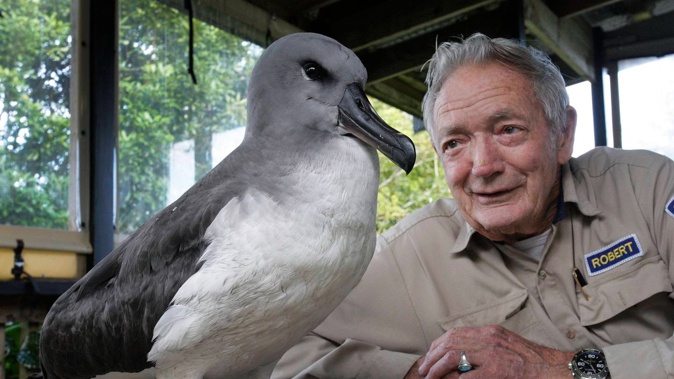
Public Interest Journalism funded through NZ On Air
A rare bird has been found on Waipu Beach tangled in nylon after trying to eat a balloon at sea.
The grey-headed mollymawk - also known as a grey-headed albatross - was discovered by a local walking on Waipu Beach, south of the Waipu River, covered in sand.
It’s the first time Whangārei Native Bird Recovery Centre founder Robert Webb has seen a live example of the species. The 7 to 8-month-old bird was taken into the centre on Monday where it has been recovering on a $25 a day diet of prawns and fish.
Webb believes the balloon the bird ate had been used by a fisher to suspend bait in the water.
“Somebody’s obviously had a floater out with a balloon on it, and it’s grabbed that because it’s tried to chew it or eat it, because it would’ve been hungry coming over from Campbell Island to here,” Webb says.
Although native to New Zealand, the grey-headed mollymawk is a long way from home. It only nests at Campbell Island and Macquarie Island, which are both south-west of Stewart Island.
With a wingspan of almost two metres, the bird is designed to be a glider which drifts on wind currents.
Robert Webb with a juvenile grey-headed mollymawk. Photo / Tania Whyte
The grey-headed mollymawk takes off from the water, because its wingspan is too large for it to become airborne from land. However, the centre’s new resident could not take off as it was tangled in nylon, and washed ashore.
It had a slight graze on its left wing, and was ‘‘absolutely smothered” in sand.
“We’ve had a lot of these easterly winds lately bringing birds in, they’re getting caught in these currents and being pushed over to New Zealand instead of the Pacific,” Webb says.
Although the gender of the mollymawk has yet to be identified, Webb says its condition is improving and it should be ready to be returned to the sea by Sunday, depending on the weather.
“We’ve had the centre running for 35 years and we’ve only ever had two of them come into our centre and one of them was already dead on the beach,” Webb says.
Webb says locals should call 08000 DOC HOT or contact the Recovery Centre if they find birds on the beaches.
The grey-headed mollymawk:
- Only nests southwest of Stewart Island
- Has a 2m wingspan
- Can reach speeds up to 127km/h
- Can only take off from water
- Lives to about 35
Alakihihifo Vailala, Te Rito journalism cadet
Take your Radio, Podcasts and Music with you

/cloudfront-ap-southeast-2.images.arcpublishing.com/nzme/AR7M4PQOK5GC3IXCPUBVK64HIU.JPG)








